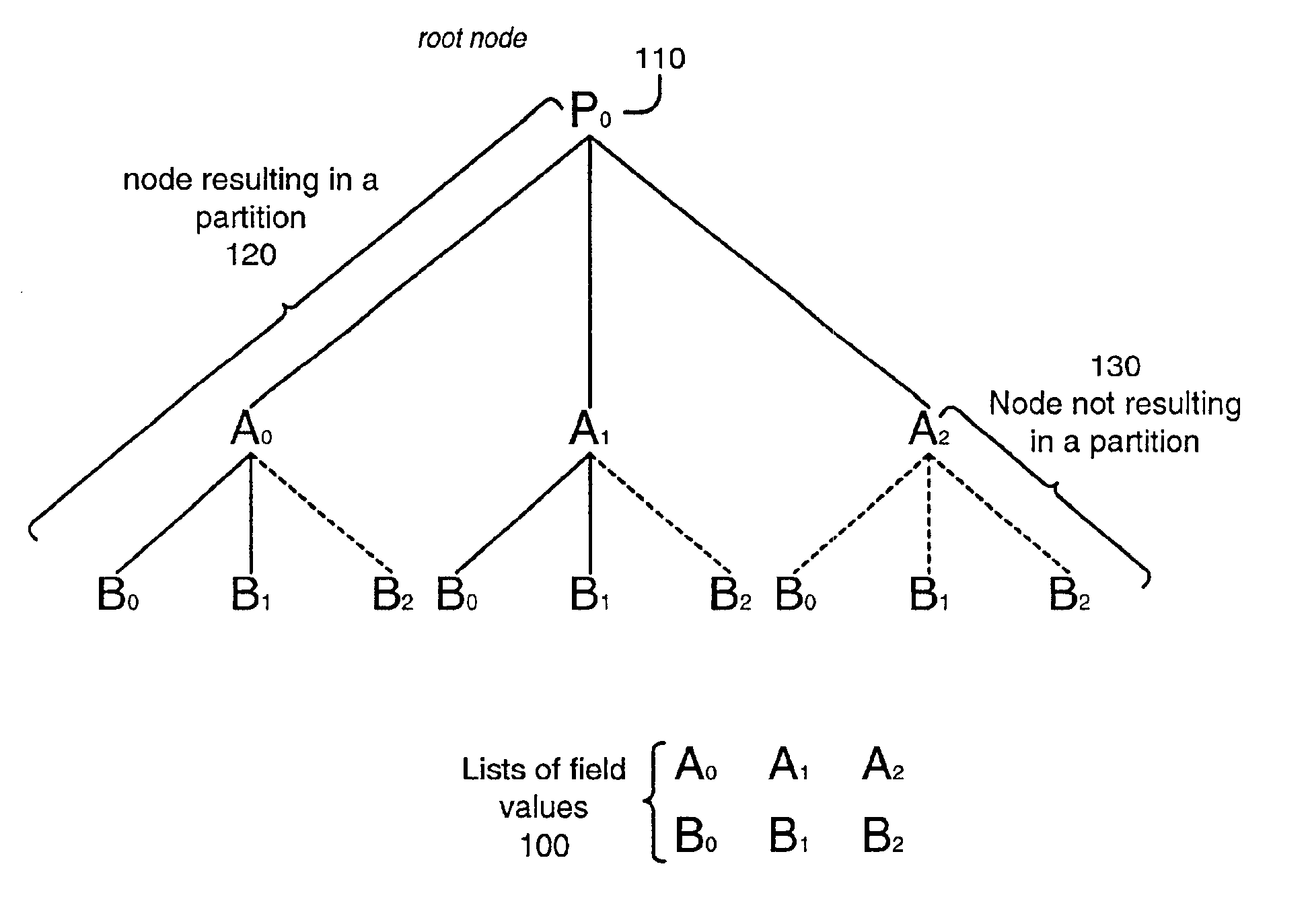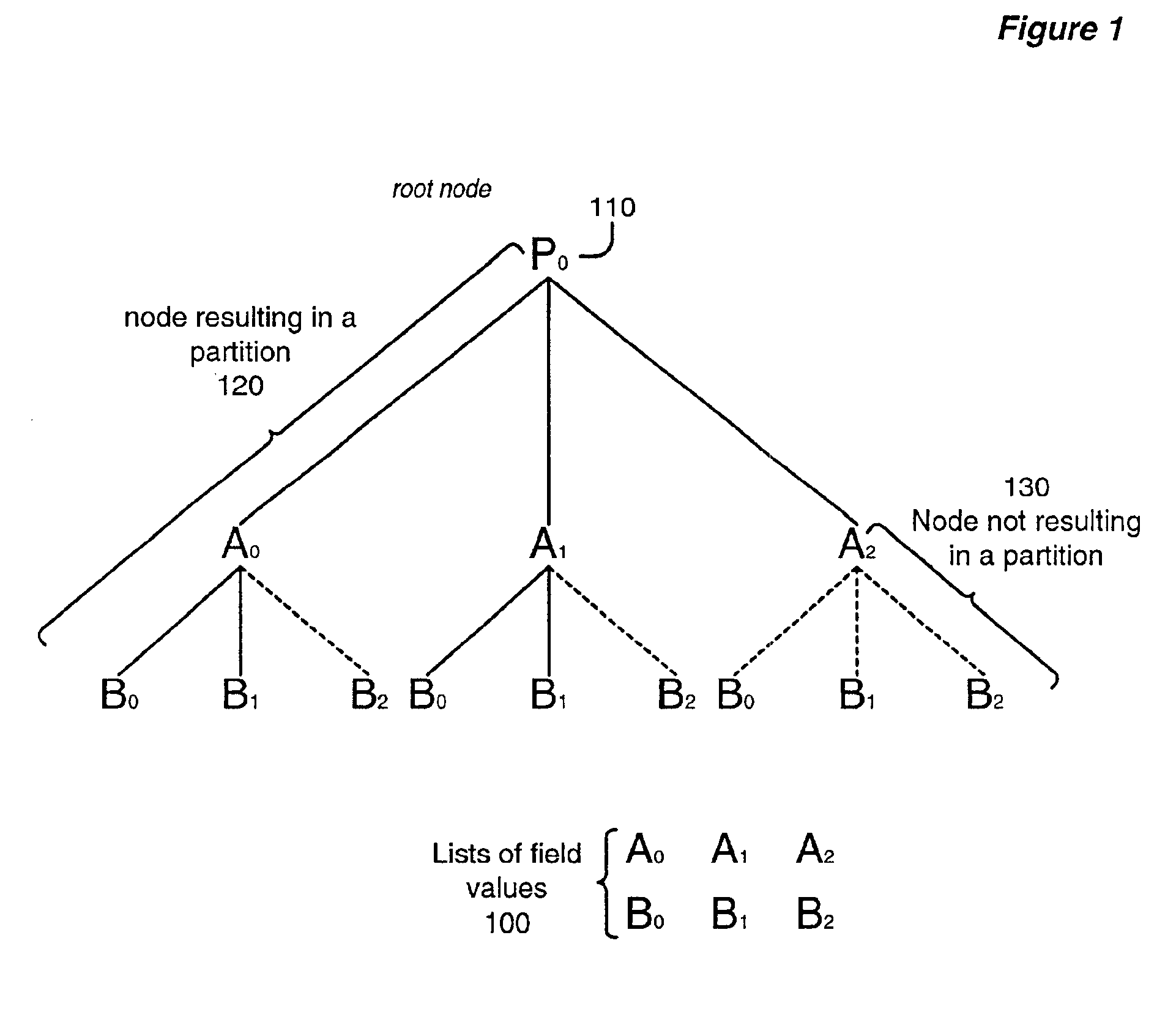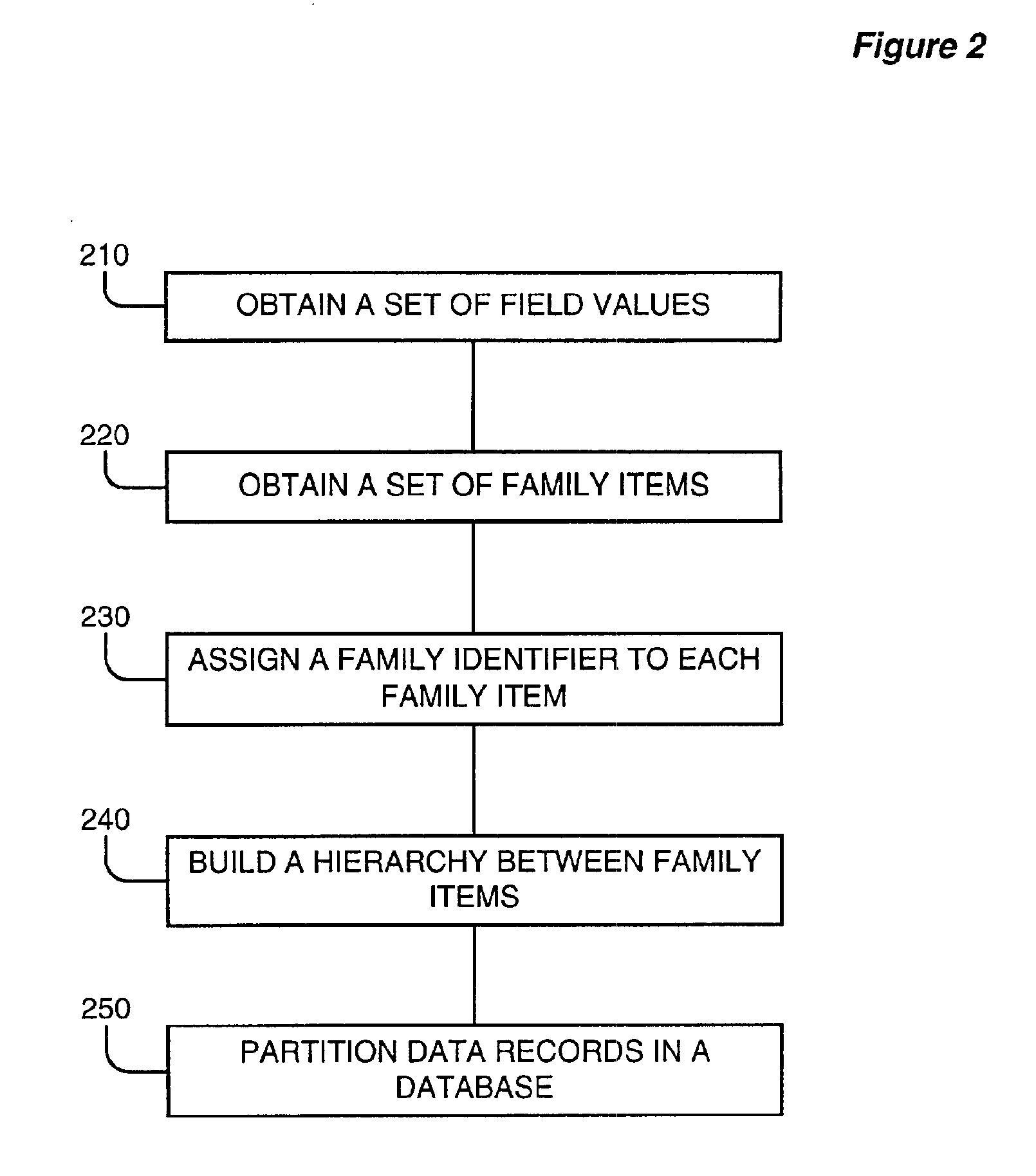However, these methods present several problems with defining structures.
Data management and searching for records then becomes increasingly complex and time-consuming because additional tables must be accessed.
Furthermore, changes to the family definition require complex restructuring of the tables and reorganization of the records contained within them.
First, the manual process of assigning the family identifiers is time-consuming, error-prone and extremely tedious.
Second, changes to the
record do not result in the product being properly reassigned to the correct family.
Third, changes to the families may require that some or all of the records of the family be reassigned.
First, there are a variety of problems setting up and maintaining the queries.
Setting up the queries is time-consuming and error-prone, because each must be manually done.
Each query must be given a name or identifier so that it can be referenced and, with a large number of families, it quickly becomes difficult to organize and manage the set of family queries.
There is no way to guarantee that the set of queries will contain the entire set of records, while also ensuring that each
record belongs to exactly one query; that is, some queries may inadvertently overlap so that a single
record belongs to multiple families, or the queries may not provide adequate coverage, so that some records may not belong to any family.
Finally, while the queries identify which records belong to the family, they fail to provide an efficient way to determine to which family a particular record belongs.
Another common data
storage problem concerns the need of a database to store fields of common information that relate to a family of related records rather than just a single record.
The challenge is to store information in a way that is efficient, easy to implement for existing data, and easy to maintain, as additional records are added to the database.
As a result, the table structure is very simple but, at the same time, it is both wasteful of storage because the common data values are duplicated in multiple records, and wasteful of effort because each of the values must be entered manually and repetitively for each of the multiple records in a family.
In addition, a change to any of the common data values is not automatically propagated through the entire family of records; rather, the
data value must be updated in each of the multiple records that contain the value, introducing the potential for inconsistency and error.
The drawback of this approach is that the link between each record in the primary table and corresponding record in the
lookup table still needs to be defined manually; similarly, new records that are added to the database must be manually linked to the common information by the user rather than automatically linked by the
system.
In addition, if there are many different fields of common information, but only some of them are used for each family, the columns that store the information will be sparse.
Tables are formatted individually by manually populating page layouts with
product data, a process that is time-consuming, tedious and very, very expensive.
There is also no simple way to experiment with different tabular
layout formats and views of the data.
Once a page has been laid out, it is difficult to add or remove records from tables without destroying the structure of the page and requiring that it be laid out again (sometimes from scratch), which discourages updates with the result that catalog pages tend to quickly become out-of-date.
Notwithstanding the high level of quality, however, it remains difficult to enforce a uniform look throughout a publication because more than one person is usually involved in the page
layout process, and each lays out pages somewhat differently.
Unfortunately, the downside of this flexibility is that automatically generated
electronic catalog pages are usually no more than wide, ugly, “spreadsheet-style” tables of data with redundant information, very little structure, and none of the sophisticated tabular layout formats that are standard for paper pages.
With category-specific attributes and a large number of categories, it is even more impractical to have a customized hand-coded display for each family, so generic unstructured presentations are even more the norm.
Moreover, when publishing to
multiple media, none of the effort invested in meticulously laying out paper pages can be leveraged for the
electronic catalog, since both the structure of the tabular layout formats as well as the
product data are typically trapped within the page layout itself, while the
electronic catalog requires that the data be stored and managed in a database to be searchable and generated in real-time.
Thus the worlds of the two media are completely distinct and non-overlapping, very difficult to integrate, and require two distinct publishing efforts.
 Login to View More
Login to View More  Login to View More
Login to View More 


